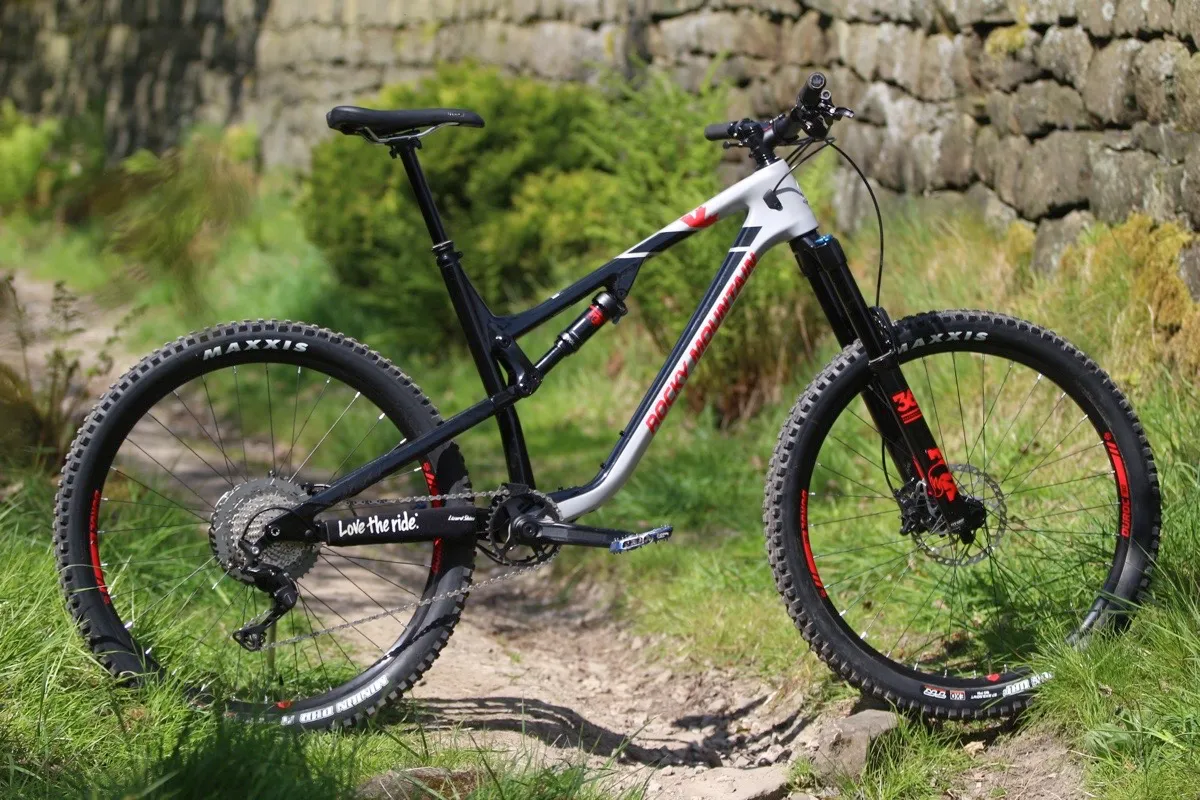Rocky Mountain has been in the mountain bike game since 1981, making it older than the Terminator. Things technically started in a bike shop in 1978, but it wasn’t until a few years later that the first production Rocky Mountain – the original Sherpa – rolled on to the aggressive trails of the West Coast. Since those early days of hand-welded steel hardtails, the brand has grown from strength to strength with the help of Olympic, and EWS level sponsored riders.
The current range of Rocky Mountain bikes has nearly something for everyone, with Rocky having rolled out several high-profile new models in the last 12 months including the new Element XC bike, the Pipeline plus bike, the Slayer enduro weapon, and even full suspension kids bikes. But it’s the 2018 Altitude that we’re focussing on today; a trail bike with more than enough travel to cope with UK riding conditions and efficient enough to be found on a few of this year’s EWS stages.
Almost exactly four weeks ago, Rocky Mountain unloaded the brand new 2018 Altitude on us, which featured an entirely new frame and geometry package designed to send the performance of its mid-travel full suspension bike well into the future. We’ve been testing one since, so lets take a closer look at what’s what on this 27.5in-wheeled, 150mm travel Canuck.

The Bike
For 2018 Rocky Mountain has made some big changes to the Altitude frame. This isn’t just a simple colour and decal update, so while the bike might share similar aesthetics with previous versions of the Altitude, pretty much every aspect of the bike has been tweaked, adjusted and updated. There are so many updates to the frame it’s hard to know where to begin!
Our test model is the Altitude Carbon 50. In the four-model Altitude range, the Altitude Carbon 50 is the cheapest of the three carbon bikes, and one step up from the entry-level, all-alloy framed Altitude 50. What Rocky has done with the Altitude Carbon 50 model is to use the same carbon front triangle as the more expensive 70 and 90 models, while mated to the alloy rear end of the entry-level Altitude 50. While this might be seen as a cost-cutting measure by some, others might see this as the preferred way to go.

The alloy rear end of our bike boasts 150mm travel via an updated Ride-9™ link. Ride-9™ is Rocky Mountain’s solution to adjusting the geometry and progression of the suspension on the Altitude. Inside the link are two square chips, one inside the other. By having these chips offset inside the link, and the shock bolt offset in the smaller of the two chips, it gives the rider options to adjust the geometry from steep to slack and to add more or less ‘pop’ to the suspension without having to touch the tune of the shock.
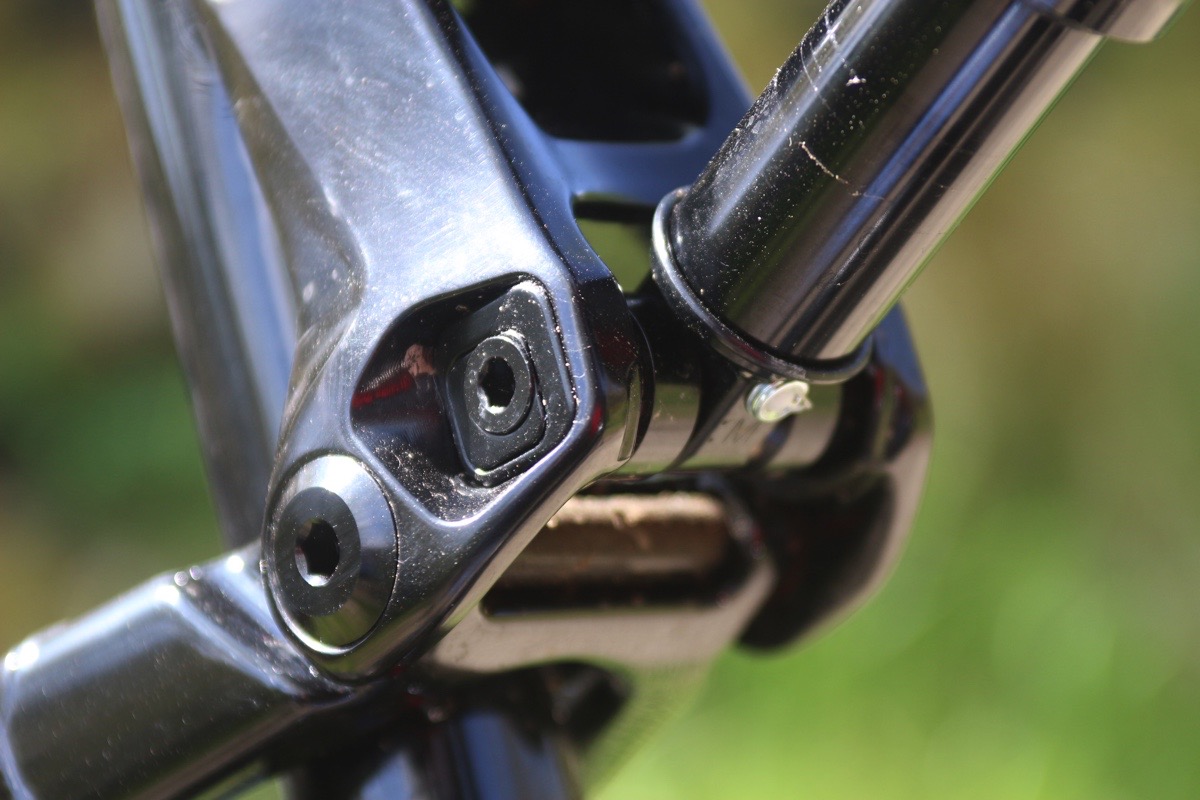
If you were to set the Ride-9™ in its slackest setting it would give the Altitude a head angle of 65º and a seat tube angle of 74º. Set the frame in the steepest and you’re looking at a 66.1º head angle and a 75.1º seat tube.
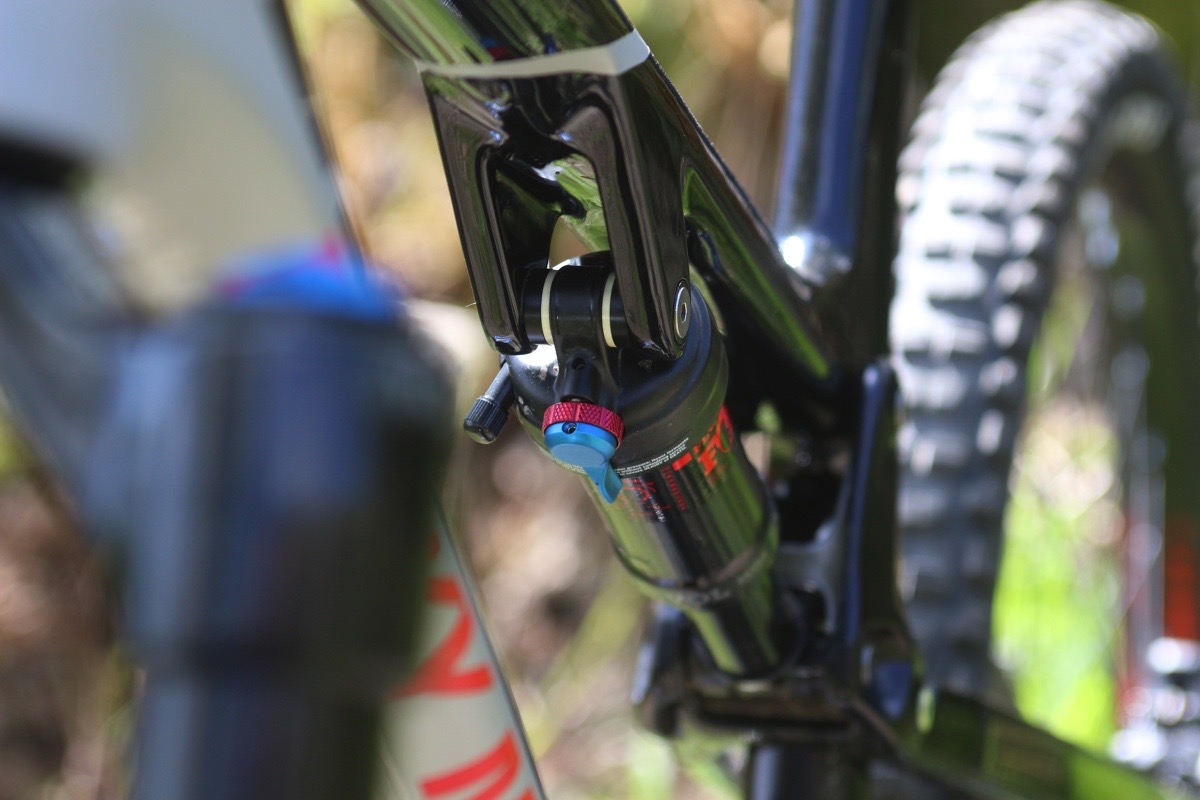
While the previous generation Rocky Mountain Altitude had the same system, the new bike has it all packed neatly away in a new narrower and lighter link. The new link has also been redesigned to give better small bump sensitivity, while the complete rear suspension package sees changes to add more progression through the stroke. The more progressive spring curve claims to add better pedalling performance and more support at sag.
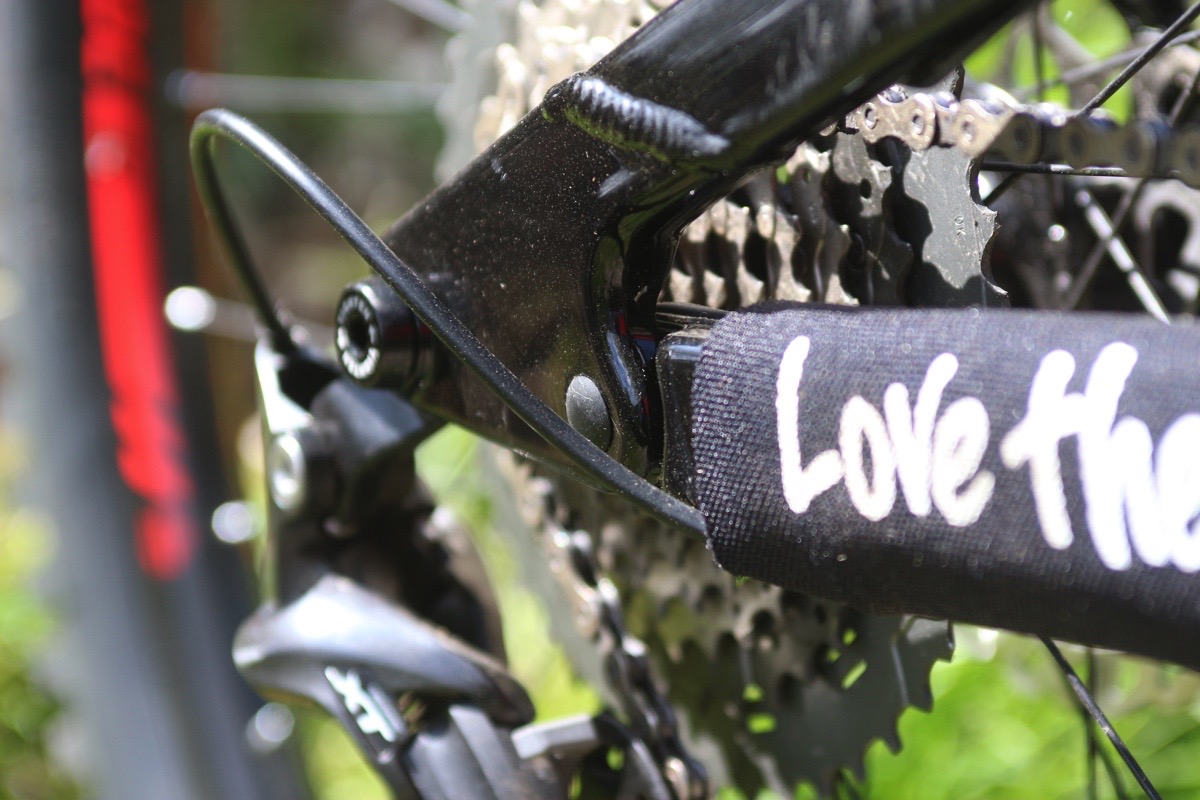
Rocky has really gone to great lengths to update the suspension platform including using new Enduro MAX bearings throughout the frame, bearings on the lower shock mounting point (which will work with aftermarket shocks too), plus very neat “Blind Pivots” for better heel clearance AND a new one-piece seatstay for a claimed 25% improvement in stiffness. Phew!
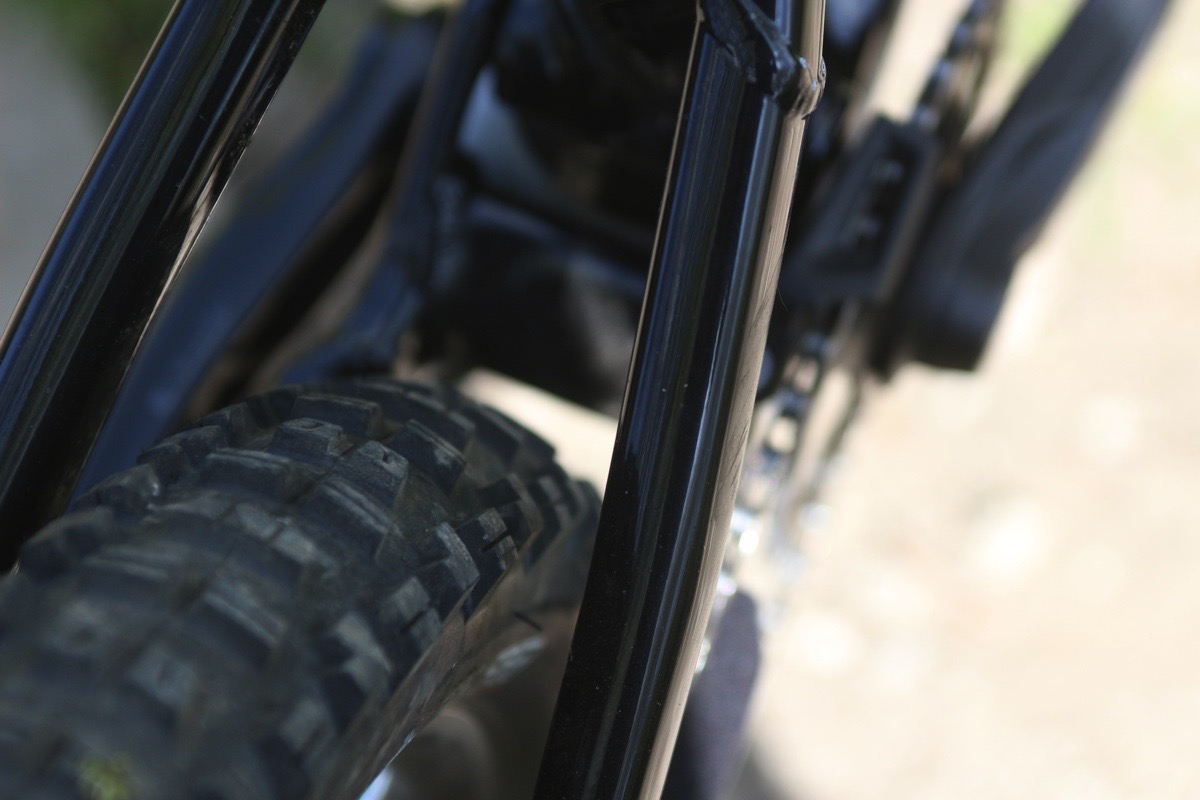
This being a bike of the 21st century, Rocky Mountain chose Boost spacing and bolt through axles, and in an attempt to save a little weight, opted for tooled axles meaning you’ll need to carry a 6mm Allen key with you to remove both the rear wheel (and the front wheel for that matter). Speaking of wheels, the Altitude is designed for 27.5in wheels, but you also have the option of going 26inch Plus. Yup, 26 Plus not 27.5 Plus. If you did choose to go chubby you will also need to run an extended lower headset cup to ensure your geometry isn’t effected in a negative manner.

As we move away from the rear of the bike we come across even more updates. The new Altitude is 1x only, bad news for anyone wanting to run a double or triple, but great news for the overall stiffness of the bottom bracket area of the carbon main frame. Concentrating on a single ring specific frame has allowed Rocky to incorporate their very own “Spirit Guide”. Unfortunately this is not an ethereal dreamcatcher, but rather a compact upper chainguide that mounts to the swingarm via shims and two bolts. This clever mounting style means the guide rotates with the chain as the suspension goes through its travel.
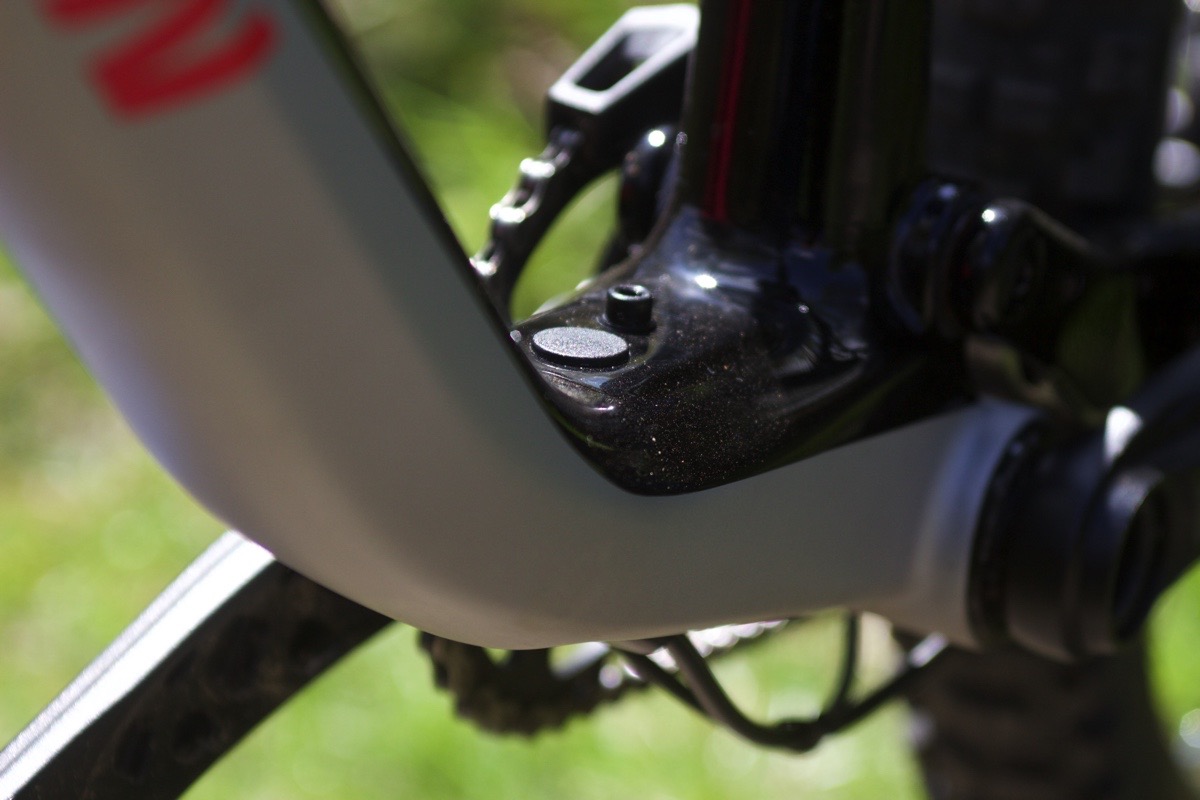
You’ll also find a new bolt and mount area where the downtube meets the BB shell, which according to the marketing material has something to do with future proofing the frame. We’re not sure what that means, perhaps it has something to do with a new suspension technology that will be announced in the near future? *Nudge nudge, wink wink*. The future-proofing continues with Shimano Di2 compatibility also.
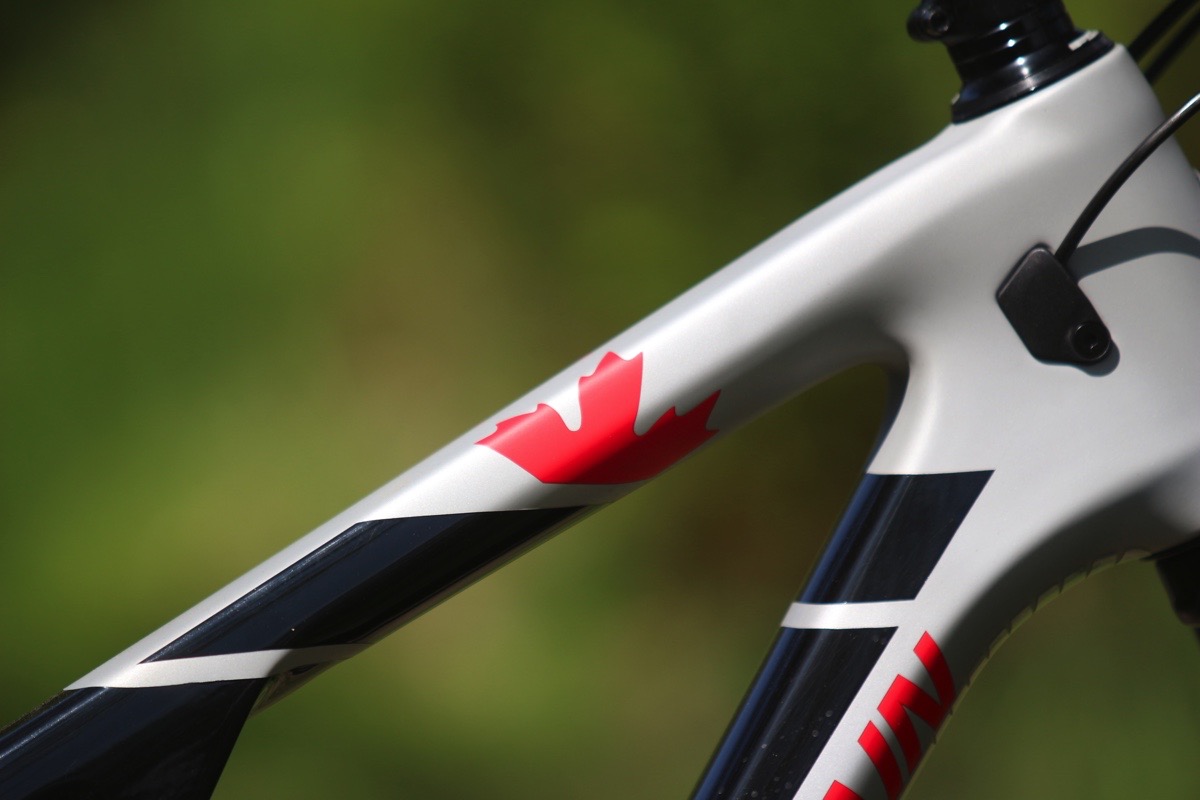
The new carbon main frame comes with a lower standover height, a longer seat tube tower for use with longer travel dropper posts, and more reach. The frame is also manufactured using SMOOTHWALL™ carbon moulding, a method that uses not inflatable bladders but solid internal 3D shapes that the carbon fibre cloth is wrapped around, which helps to create smoother and thus more consistent wall thickness during the compaction process.
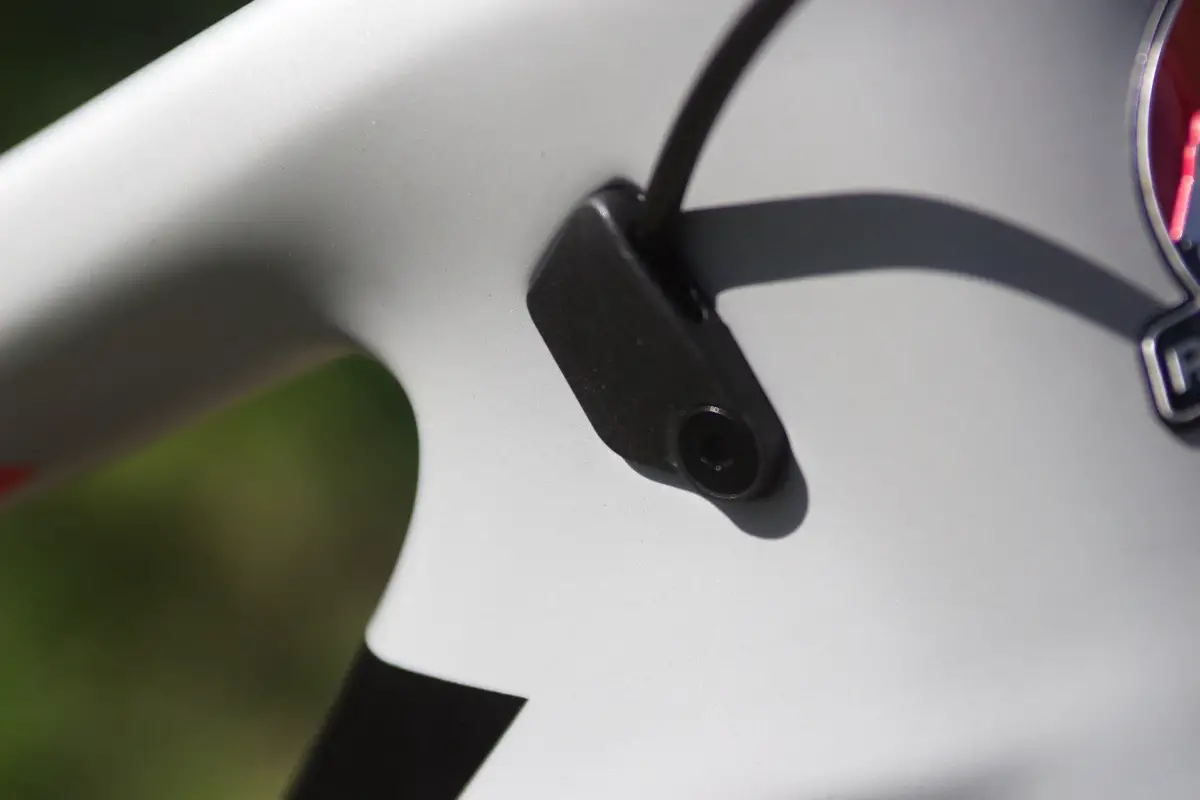
Finally, there’s a new cable management system to keep routing neat, tidy and quiet. There’s also a PF92 press fit bottom bracket, ISCG05 tabs, and metric shock measurement. So yeah, the new Rocky Mountain Altitude might look like the old one, but it is very different, much more modern and more refined.
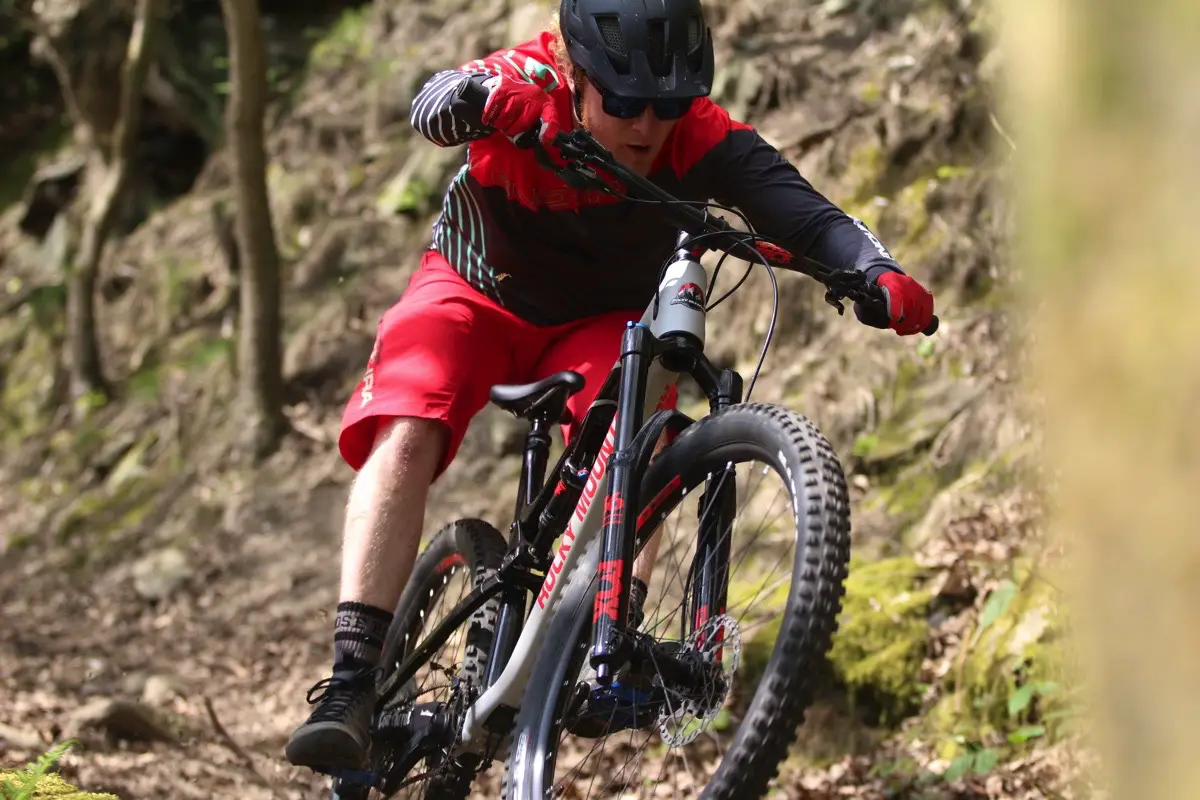
Clinging on to that all new frame is a set of Fox 36 Float EVOL Grip Performance forks with 160mm of travel, a Fox Float DPS EVOL rear shock providing 150mm rear wheel travel, and a pair of Sun Duroc 30 rims laced to a Rocky Mountain front hub and a DT Swiss 370 rear hub. Rocky Mountain also provides the stem, and Fox continues its contributions with a Fox Transfer dropper post.
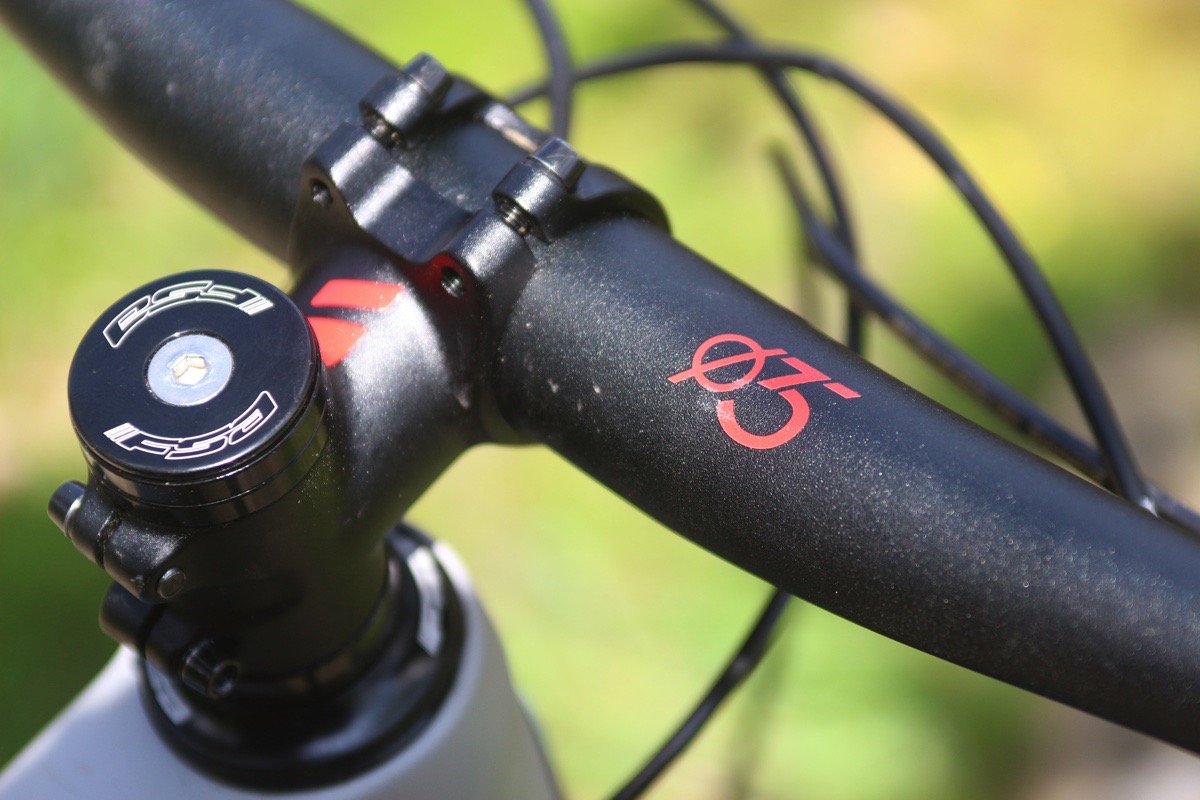
Fellow Canadian brand, Race Face, play its part with a 780mm Chester riser bar, BB92 bottom bracket and Aeffect Cinch crankset. The rest of the kit is a Shimano mix of SLX disc brakes and shifter (so only single shifts at a time) with Shimano XT rear mech and 11-46t cassette.
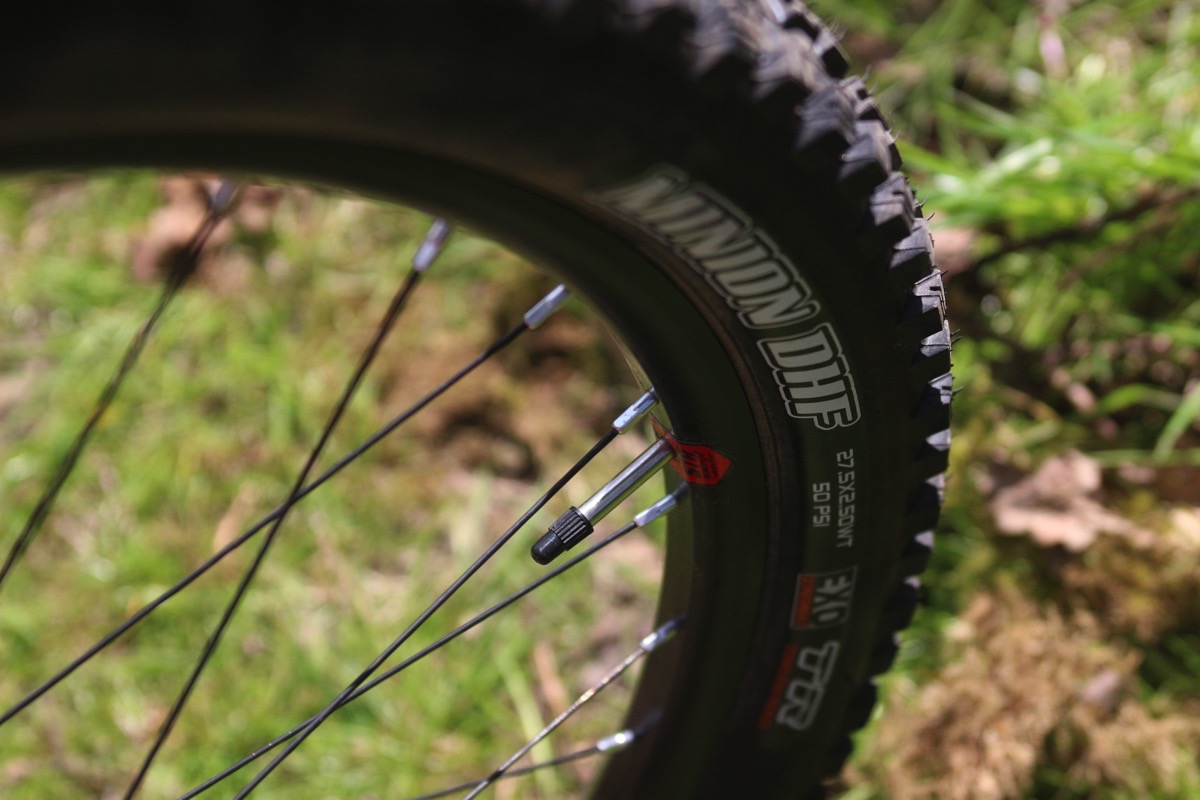
The last few components to mention include a KMC chain, FSA headset and Maxxis Minion DHF 2.5in and DHR EXO 2.4in tyres. Rocky Mountain specs the bike with inner tubes but it’s an easy upgrade to tubeless.
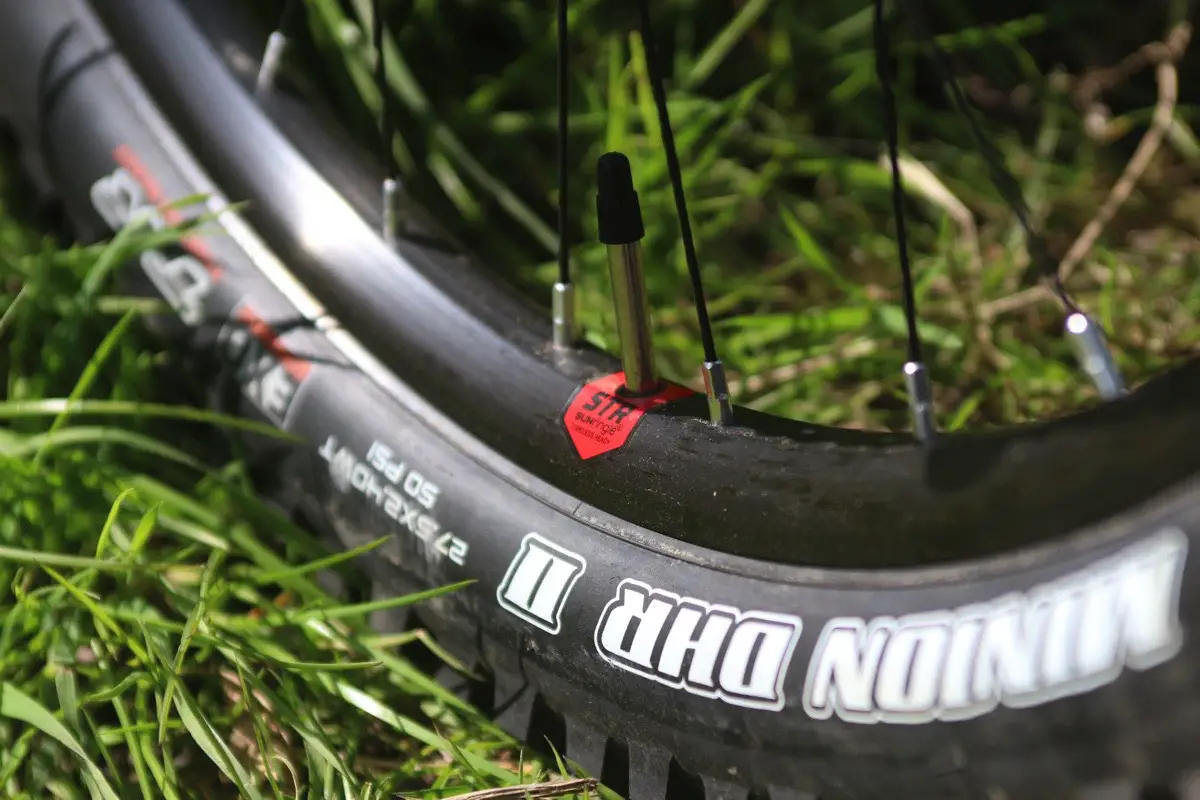
So what does all this mean? Well, Rocky Mountain claims the new Altitude is lower, slacker, smoother, stiffer and quieter. Let’s see if they’ve hit those points.
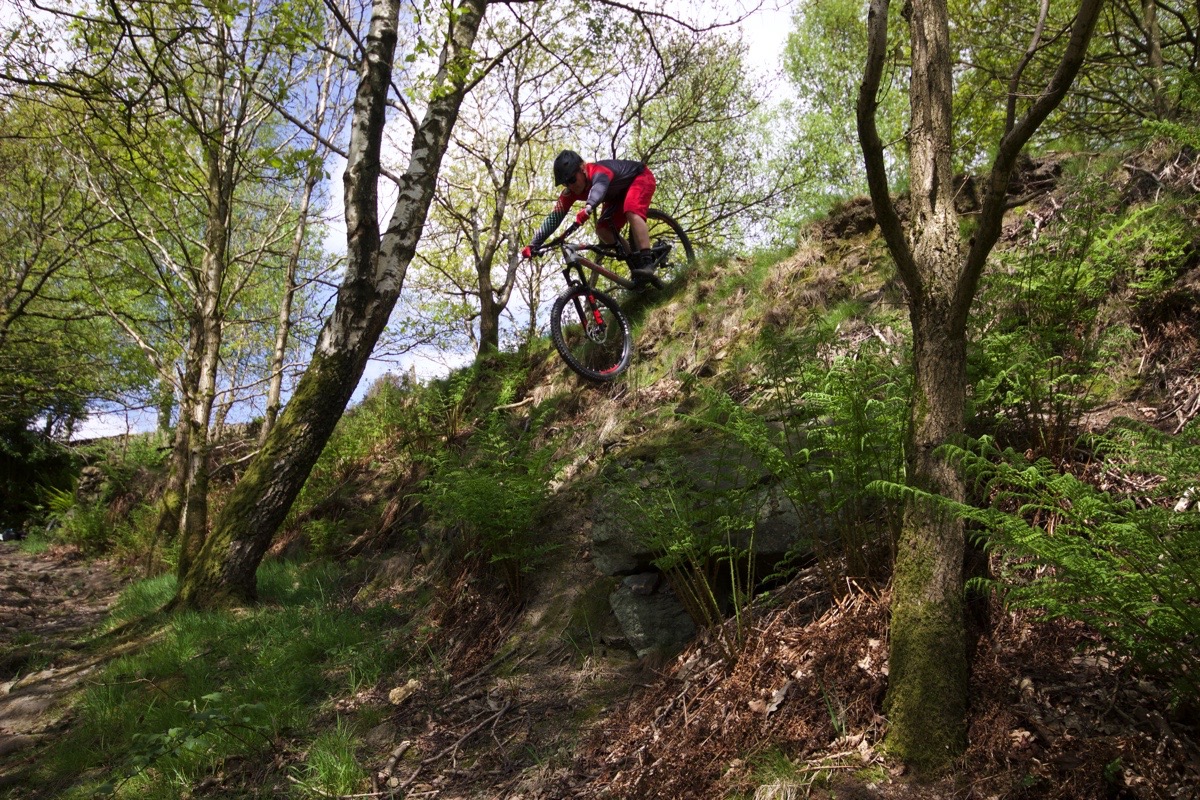
Ride
With sag set to around 30% front and rear, there was little else to do to the Altitude before hitting the trails. My first ride on the bike took me up and around Lady Bower where I was eager to see if this 150mm travel carbon frame would be as happy to ride uphill to earn a blast down “The Beast”.
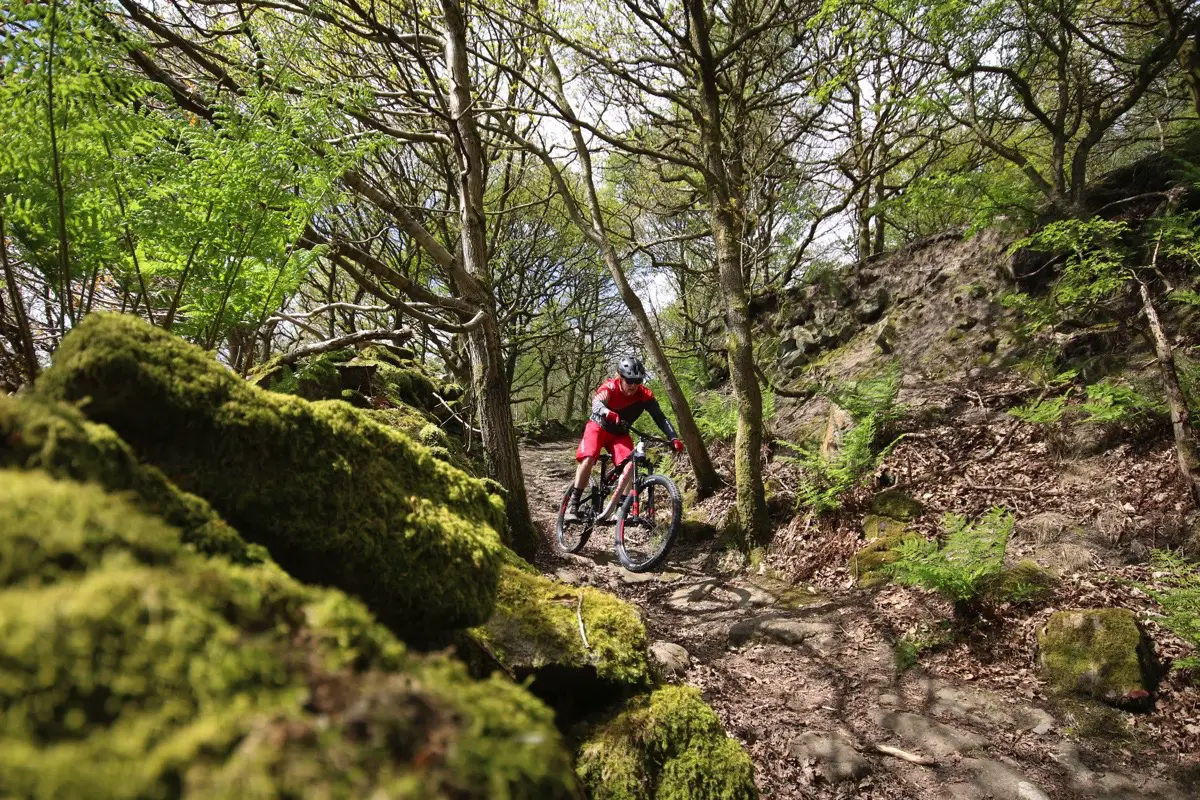
Being 178cm I was testing a large size frame, and in all honesty, I got along with it very well. The slightly longer reach put’s you in a comfortable position for climbing while in or out of the saddle and there is enough room, thanks to the lower standover, to really move the bike around when needed. I would say that I would also have been equally happy with a longer reach bike so if you’re taller than me and like a stretched position it would be worth a test ride before laying down your cash.
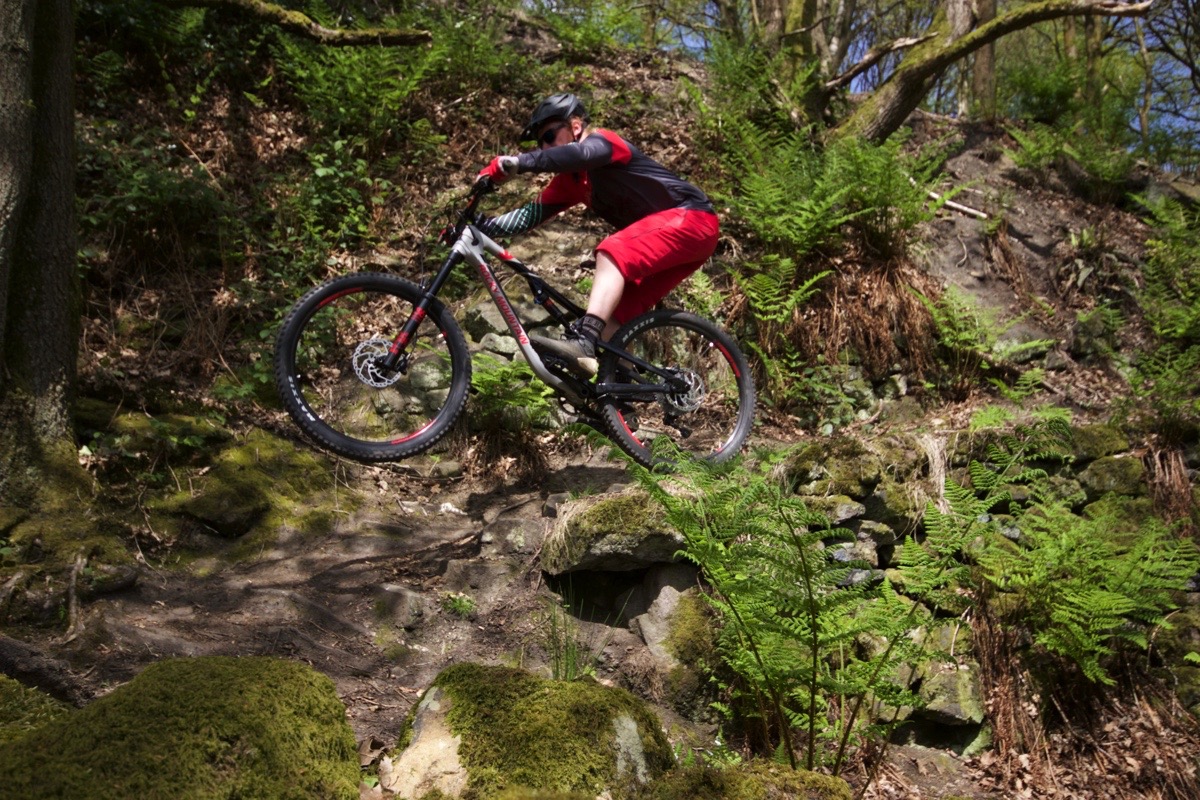
So feeling comfortable and also being extremely happy with how simple the Altitude is to set up, I took this EWS worthy bike for a climb. Now one of the updates to the 2018 bike is an updated Ride 9 link for better small bump response and I have to say that whoever designed this at Rocky Mountain really knows their stuff.

The rear end of this bike is dialled, it happily absorbs small bumps while climbing but remains nicely supported in its sag. The support remains evident when climbing out of the saddle or sprinting too which allows you to charge in to trails and descents with confidence.

Durability Notes
Two weeks really isn’t long enough to really see how durable the new Rocky Mountain Altitude is but given their track record we have no concerns about how the frame will last and the fact that Rocky Mountain has thought about future proofing the bike is great for all of us serial upgraders. The whole bike ran smooth and quiet during my time with it, and the upgrade to bearings over the previous bushing design is much appreciated for all-season British mountain bikers.
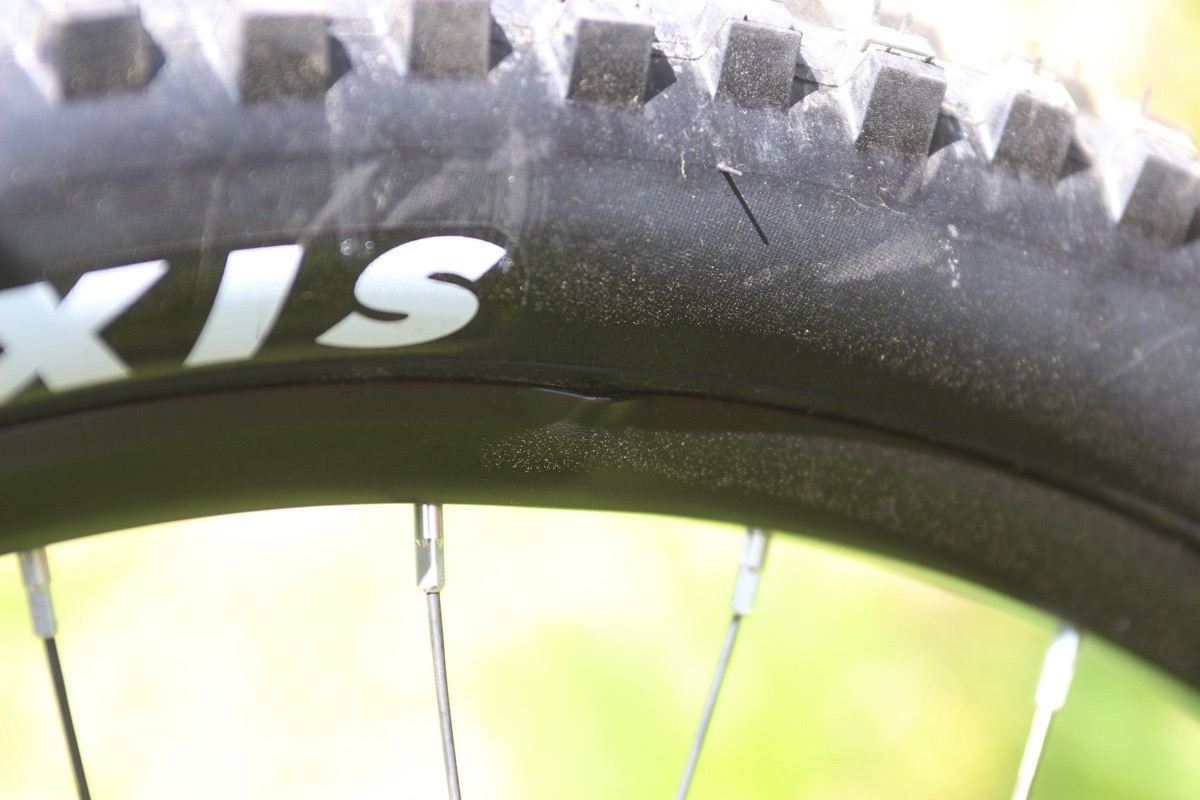
Race Face, Shimano and Fox are all names that we’ve had plenty of time on various bikes and nothing strikes us as a weak link. My only concern over durability are the Sun Duroc 30 rims. I managed to dent the front rim quite badly on the first ride – admittedly on a very rocky downhill (The Beast near Ladybower in the Peak District if you’re wondering), so depending on how hard you ride and where you ride these might need looking at some point. Normally a rim sidewall will fold inwards after a hard impact, but due to the very shallow depth and blunt shape of the Duroc 30 rim, the dents folded outwards. For running tubeless, this means there’s a much greater chance of permeating the tubeless seal, and ending up with a flat.
Things That Can Be Improved
- The Sun Duroc rims are very soft, and if you ride this bike to its full potential, you’ll either need to be proficient at straightening out the bends, or just invest in a new set of rims/wheels.
- Although longer than in the past, the reach is still shorter than some uber-modern bikes on the market.
- I would prefer a quick release axle system front and rear rather than the tooled system in place.
Things We Loved
- Supple rear suspension with lots of support in the sag.
- Easy to get up to speed and blast through challenging terrain.
- Future-proof design
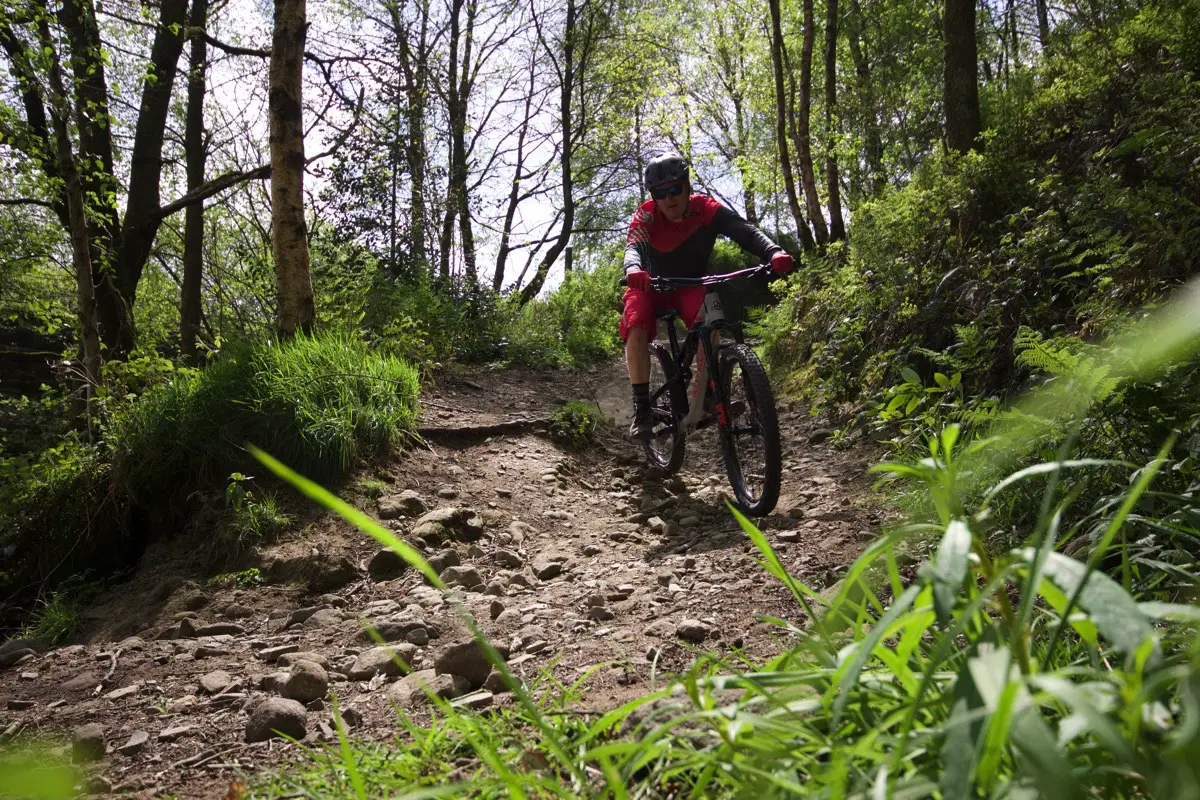
Overall
The Rocky Mountain Altitude has a lot going for it. The new frame is feature packed and upgrade ready, while the rear suspension is amazingly well sorted. The bike handles big mountain rides with ease and will happily turn even the rockiest of terrain into a fast magic carpet ride. The new Altitude is a competent climber too, the longer reach sits you in a more comfortable position and the new linkage will happily eat up small bumps.
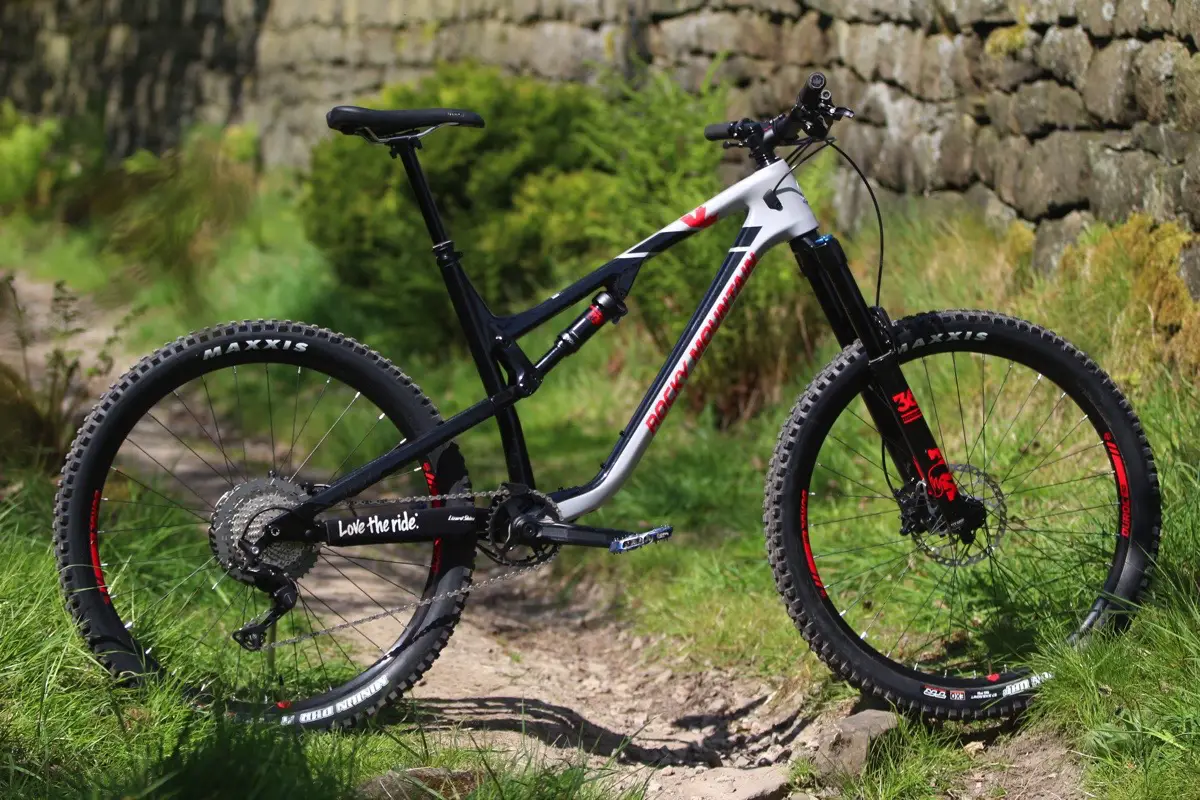
This is a fast bike that rewards riders who enjoy speed and comfort but while it does have the ability to feel like a mini DH bike, it can also be agile and engaging too.
Rocky Mountain has really impressed me with the new Altitiude, it’s certainly a bike I’d be happy to take out again, and one which I would strongly suggest you take on a test ride if a 160/150mm bike is on your current shopping list.
2018 Rocky Mountain Altitude Carbon 50 Specifications
- Frame // SMOOTHWALL™ Carbon Main Frame With FORM™ Alloy Seat/Chainstays, 150mm Travel
- Fork // Fox 36 Float EVOL Grip Performance, 160mm Travel
- Shock // Fox Float DPS EVOL Performance
- Hubs // Rocky Mountain Sealed Boost 110x15mm Front & DT Swiss 370 Rear 148x12mm
- Rims // Sun Duroc 30
- Tyres // Maxxis Minion DHF WT EXO TR 2.5in Front, & Maxxis Minion DHR II WT EXO TR 2.4in Rear
- Chainset // Race Face Aeffect Cinch With Cinch 32t Steel Chainring
- Front Mech // N/A
- Rear Mech // Shimano Deore XT 11-Speed
- Shifters // Shimano SLX
- Cassette // Shimano Deore XT, 11-46t
- Brakes // Shimano SLX, 180mm front rotor, 160mm rear
- Stem // Rocky Mountain 35AM, 35mm Length
- Bars // Race Face Chester, 780mm Wide
- Grips // Rocky Mountain Lock On XC
- Seatpost // Fox Transfer Performance Elite 30.9mm
- Saddle // WTB Volt Race
- Size Tested // Large
- Sizes available // S, M, L, XL
- Weight // 13.59kg / 29.9lbs

